Teaching students to answer constructed response questions correctly and with sufficient text evidence can be quite the feat. A good starting point is to use an acronym such as RACE to help guide the students. But, that is just one part of instruction. The most difficult part is teaching students to find text evidence and then cite it appropriately to fully support their answer or analysis. This post will share my recommended text evidence activities, tips, and strategies (including several free resources).
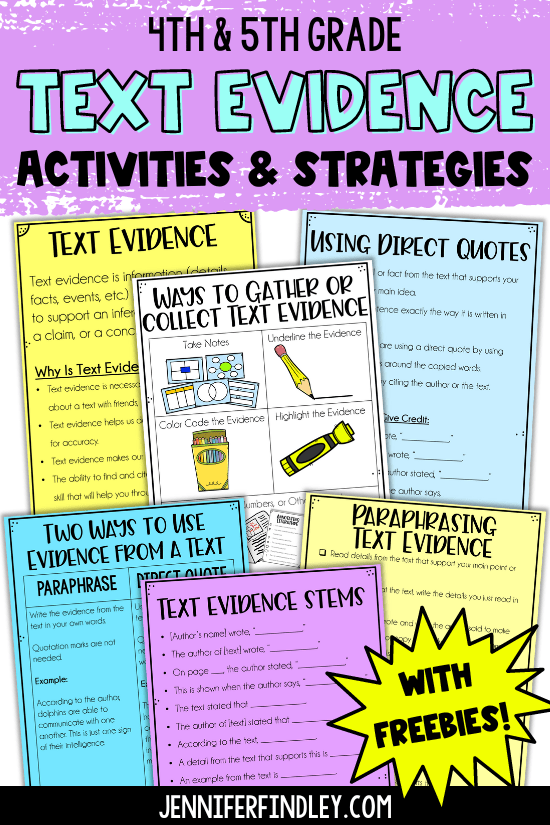
What is Text Evidence?
Table of Contents
Text evidence is information (facts, details, quotes) from a fiction or nonfiction text that is used to support an inference, claim, opinion, or answer.
Students are often required to include text evidence to support their answers to constructed response questions and extended essays. Text evidence is also important to use when having discussions about texts. It helps back up the student’s thoughts on the text they are reading.
Tips Teaching Students to Find Text Evidence
1. Introduce with Read Alouds and Simple Activities
Teaching Text Evidence Through Read Alouds
I like to start introducing the skill of collecting text evidence early on in the year with relevant read alouds.
When reading a picture book or chapter book, give your students a focus question or task and then have them collect evidence by writing it on post-it notes throughout the read aloud.
Here are some examples that are easily adaptable to most read alouds.
Example Prompts for First Reads
- Find evidence of a theme used by the author to teach the reader a lesson.
- Find evidence of the text structure used by the author.
- Find evidence of the character traits displayed by the main character(s).
- Find evidence of the author’s opinion/viewpoint/perspective of the topic.
- Find evidence of the point of view/perspective used to tell the story.
Example Prompts for Second Reads
- Find evidence that the main character is XYZ (sad, greedy, brave, honest, etc.).
- Find evidence that the setting is XYZ (important to the story, the desert, a school, etc.).
- Find evidence that the animal is XYZ (beneficial to humans/ecosystem, harmful, endangered, etc).
This can be a new read aloud or even a familiar read aloud. Familiar read alouds are excellent for digging back into a text to specifically look for evidence to support a point, conclusion, or inference.
After gathering the text evidence, we discuss the evidence we found with partners and then as a class. You could keep this simple with just a class discussion or elevate it by listing the evidence on a chart, ranking the evidence from strongest to weakest, or having the students record their thoughts in a constructed response. For more tips on helping students with constructed response reading questions, click here.
Teaching Text Evidence Through Simple Activities
After introducing the skill of finding relevant text evidence with read alouds, I like to use another text evidence activity that has the students reading texts and finding evidence to support one inference. For this, I use my “What’s the Text Evidence?” reading activities.
To complete the activities, the students will read texts (eight texts per set). They will use text evidence to determine the animal, career, or location (depending on the set) being described. They will then underline or summarize the text evidence that helped them infer.
This activity is a perfect next step because it is both non-threatening and engaging for students.
2. Teach the Importance of Finding Textual Evidence
I also really want to make sure my student understand why they are searching and citing evidence. We discuss how evidence helps in a few ways:
- Text evidence is necessary to support discussions about a text with friends, classmates, or teachers.
- Providing text evidence helps us double check our own answers for accuracy.
- Providing text evidence makes our answers valid and reliable.
- The ability to find and cite text evidence is a life-long skill that will help students throughout school and in their career choice.
Notice how I don’t mention the state test. This is intentional. I want the students to see the purpose beyond a test.
We typically discuss this early on when introducing text evidence and I try and sprinkle it in as it comes up throughout the year. This keeps it from seeming like chore and unnecessary busy work.
3. Require Text Evidence in Discussions
One easy way to help your students master text evidence is by requiring they use it in discussions. This can be whole class discussions or peer-to-peer discussions.
A very simple way to do this is using the stem:
I know…because…
Post the stem and remind your students to use this to defend and back up their answers.
As your students become comfortable with using evidence to back up their answers, add more sentence stems or sentence starters for your students to choose from.
However, I like to begin with the easiest one possible for my students while they are getting comfortable with including text evidence in their text discussions. More about the other sentence stems you can offer your students later in this post.
A great activity for discussing text evidence is my “Who is the Speaker?” Printables.
- To complete the printables, the students will read a half-page text from an unknown speaker/narrator. The students will use text evidence to determine who the speaker of the text is. They will also underline and summarize the text evidence that supports their answers.
- I like to partner my students up and give each one a different printable. They have to convince their partner of who the speaker of their text is by using text evidence.
4. Teach Students Multiple Ways of Gathering Evidence
Another practical real-world skill involving evidence is modeling, teaching, and practicing multiple ways of gathering evidence.
Here are some examples:
- Taking notes
- Underlining
- Color coding —> For ready-to-use text evidence activities with color coding embedded, click here.
- Highlighting
- Using marks, numbers, or other symbols
After introducing and modeling the different ways to gather evidence, my students then chose the way that works best for them.
Also, you want to ensure they have practice finding text evidence while:
- Listening to a read aloud
- Reading a book
- Researching on the internet
To provide direct and explicit practice in this area, I use two resources:
1. Find the Evidence Printables
- To complete the text evidence printables, the students will read a grade level text (mix of fiction and nonfiction). They will then read to see what evidence they are looking for. They will reread the text, find required text evidence, and underline/highlight/or record it.
2. Find the Evidence Task Cards
- This is a similar activity but in task card format. To complete the task cards, the students will read the directions to see what specific text evidence they are looking for. They will then read the text and find that text evidence (again in whatever method of gathering you recommend or they choose). Finally, they will summarize the evidence.
Want to try these for FREE? Enter your information below to have 11 unique Text Evidence Task Cards sent to your email!
FREE Find the Evidence Task Cards
Join my email list to get the Find the Evidence Task Cards for FREE!
Explicitly Teach Students How to Cite Text Evidence
1. Teach Students to Paraphrase Evidence and Use Direct Quotes
Make sure that you explicitly teach the different ways to cite evidence from the text: quoting and paraphrasing. I do teach both types but, honestly, I prefer to have my students paraphrase the evidence in their own words. This keeps them from plagiarizing and having an answer that is not their original thoughts. With that being said, quoting directly from a text may be a requirement in your state, so I recommend looking into that.

The Find the Evidence task cards mentioned in the above section work perfectly for practicing citing text evidence because the students’ jobs are to only find the relevant evidence and then summarize it.
2. Provide Sentence Stems
Once your students have become more comfortable with pulling text evidence into their writing and discussions, it is time to provide them with more advanced options for bringing in that evidence.
3. Teach the Power of 3 (Three Pieces of Text Evidence)
I teach my students the power of 3. This means that they try to provide three pieces of evidence to support their answers. We do talk about how sometimes three pieces of evidence may not be available. However, teaching the power of 3 and that the more evidence you provide, the more difficult it is to refute the answer, keeps students searching for more relevant evidence to use.
Teaching Students to Explain Text Evidence
The final step is teaching students to explain their text evidence. This is by far the trickiest skill in the entire text evidence process. It’s both difficult to teach and tricky for students to master. This is one reason I recommend waiting until your students have mastered the above skills before even tackling this part.
Here are some strategies I use to help my student understand what it means to explain their evidence, why it is important, and to keep them from just restating their evidence.
1. First, I introduce explaining evidence using a detective analogy. We talk about how detectives collect all of the important and relevant evidence for a case. But they don’t just plop the evidence down on their bosses’ desks. They have to explain how the evidence they collected proves his or her case. You could also use a lawyer/judge analogy for this as well.
2. Next, I provide simple sentence stems to both help my students explain their evidence and reinforce the importance of explaining it to begin with. I do a lot of modeling with this step. It is definitely not a “give them the list and forget about it” strategy. The stems are also very basic and simple for a reason. I want them to understand the purpose of explaining evidence and the difference between explaining it and just restating it. Eventually, the students will move away from this and use varied language (though sometimes this does require more modeling and support from me).
One text evidence activity that really helps with the skill of explaining text evidence is my “What Does the Text Evidence Reveal?” Task Cards.
For this activity, the students will read a text (mix of fiction and nonfiction). They will analyze the underlined evidence. They will then answer the question, which requires them to write about what the evidence reveals or shows them. This activity is perfect because it allows them to focus explicitly on explaining the text evidence and what it shows.
For access to my FREE constructed response collection, click on the image below. You will be taken to a webpage where you can enter your email to unlock access to the resources. The collection includes the freebie shown in this blog post, along with other resources for teaching and practicing constructed responses in 4th and 5th grade.
Want ALL of the Text Evidence Activities Featured on this Post?
Each activity is linked in the section that includes it, but I wanted to make sure that you saw that I have a money saving bundle of all of my text evidence activities. Click here or on the image below to check it out and read more.
Shop This Post
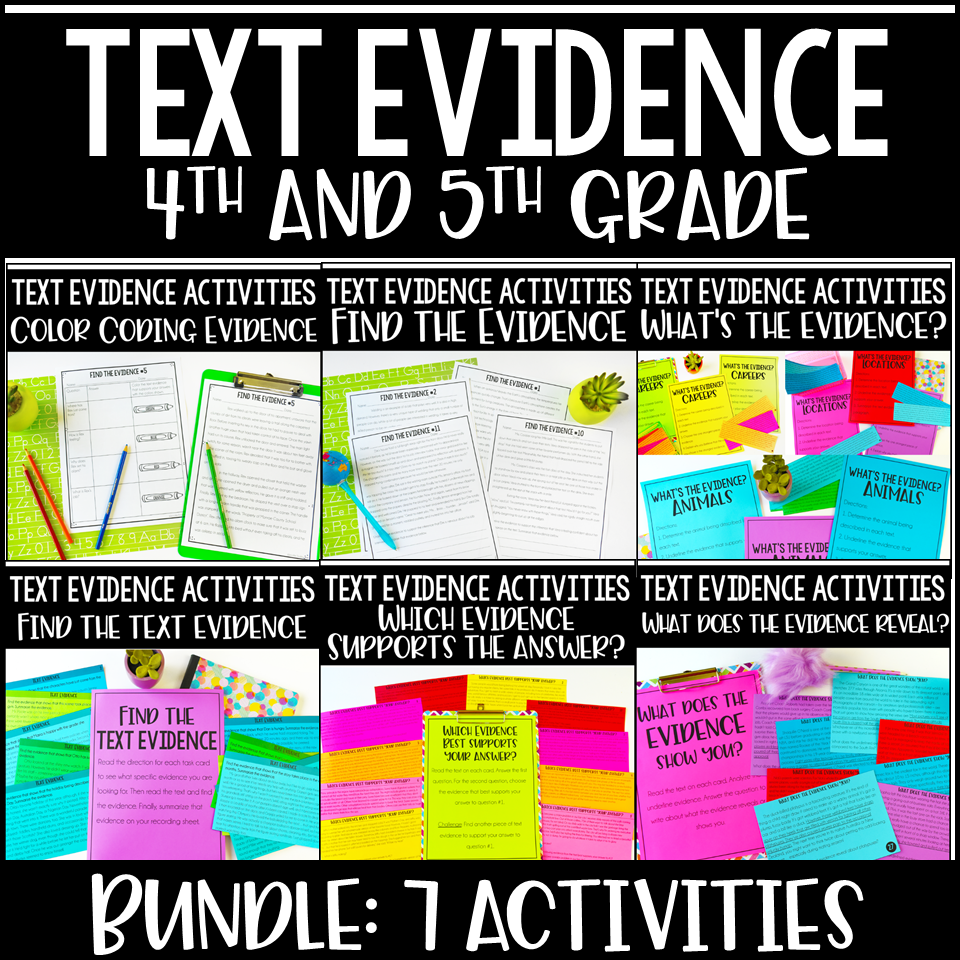
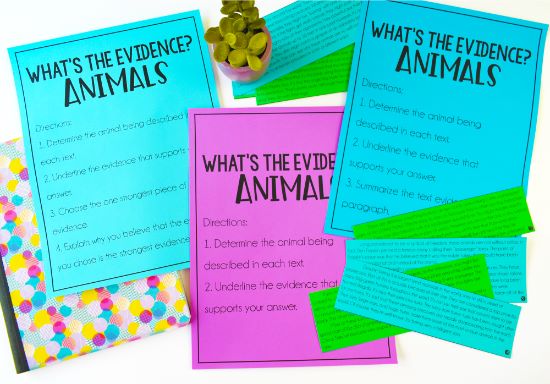
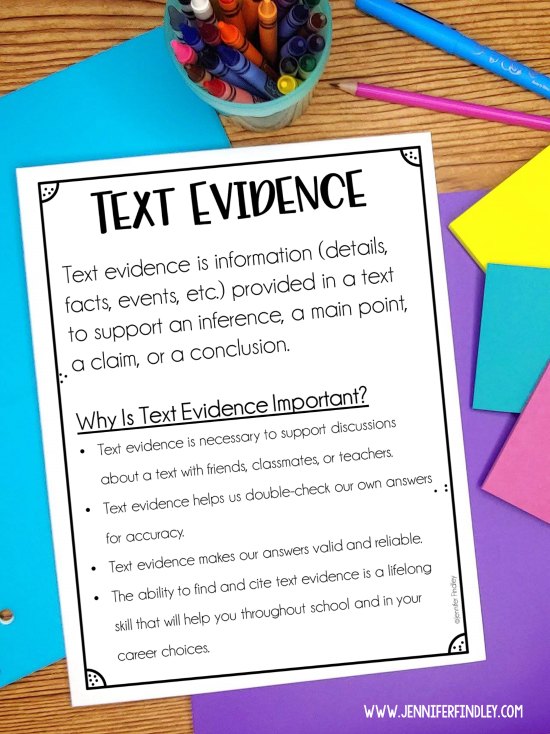
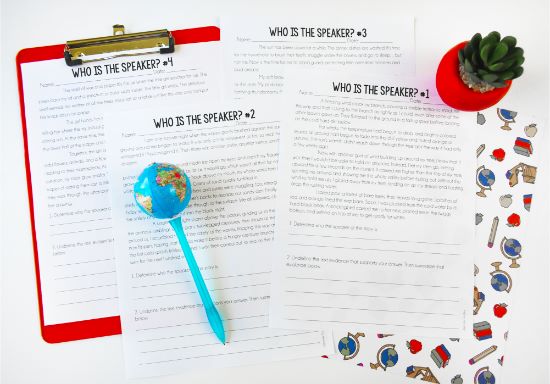
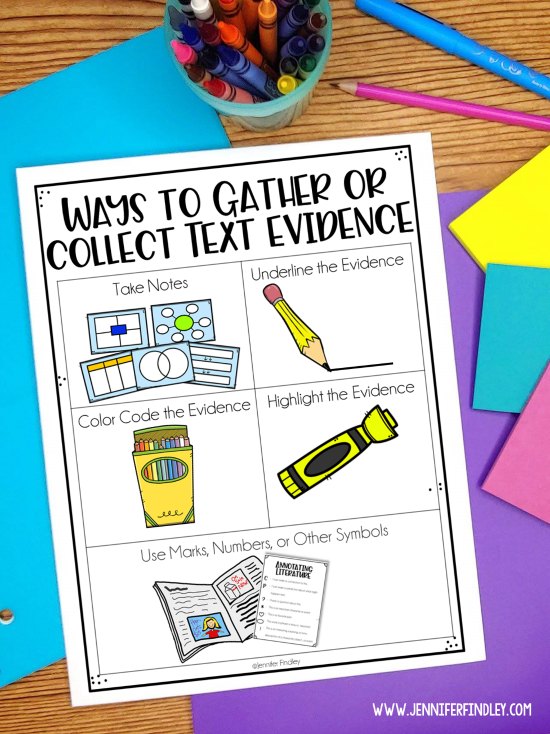
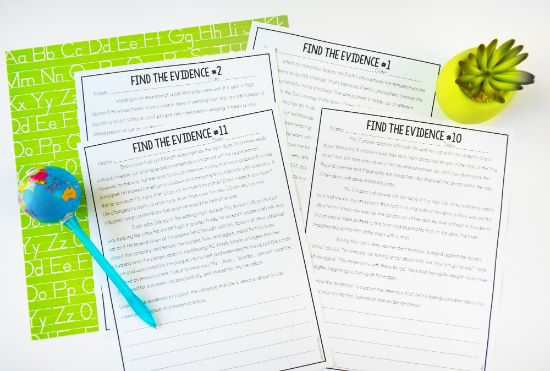
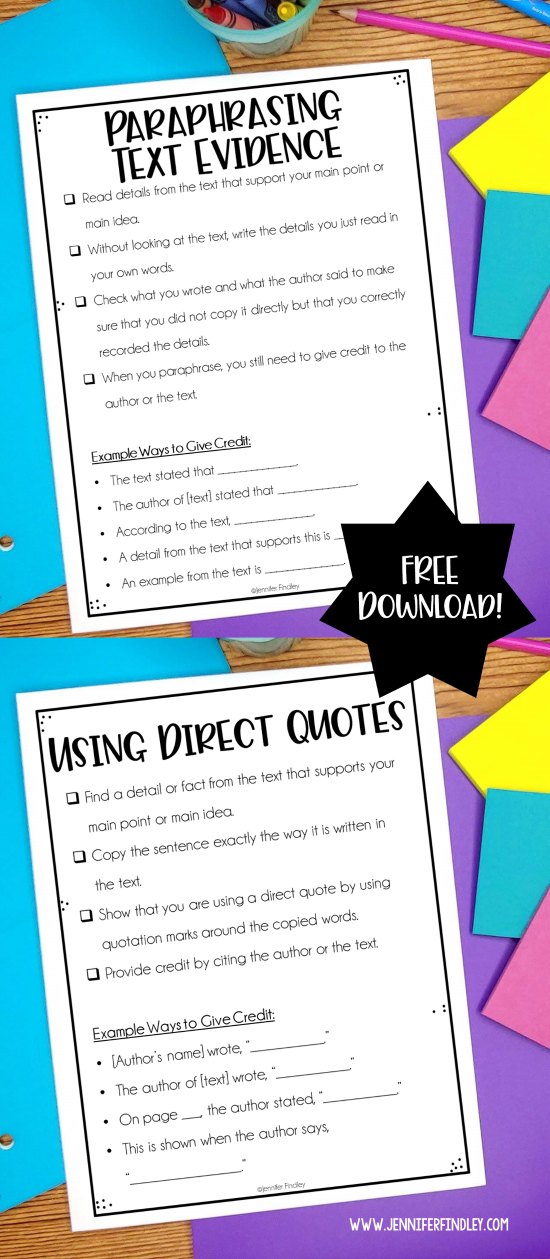
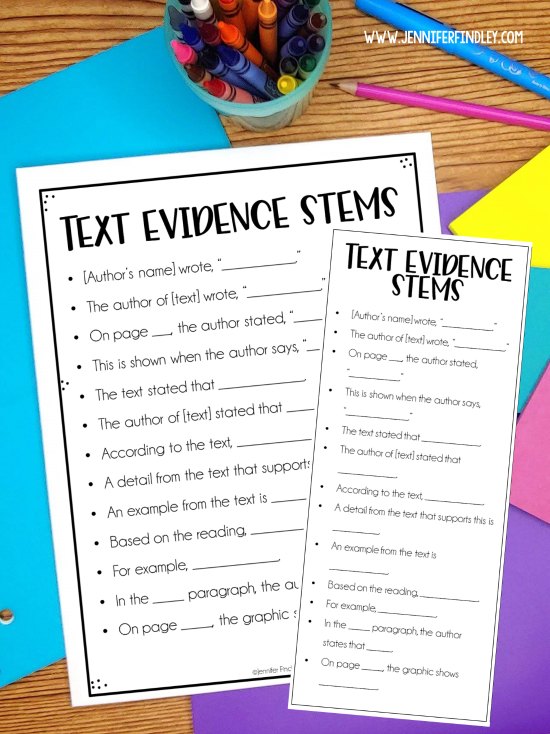
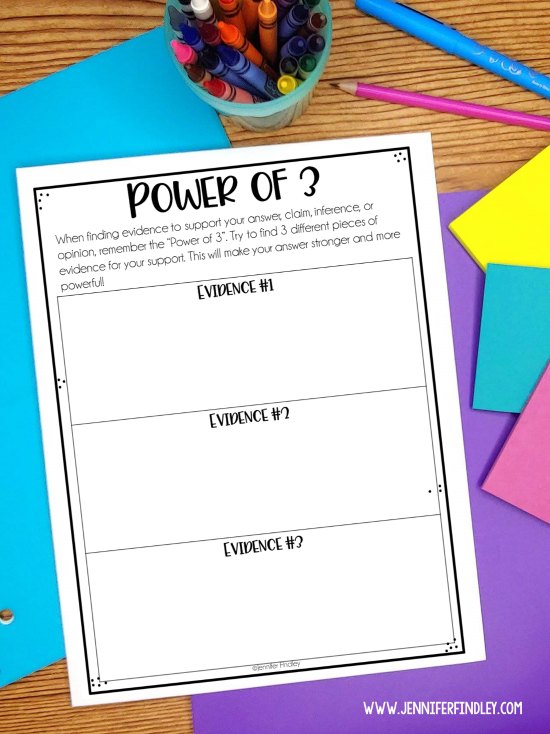
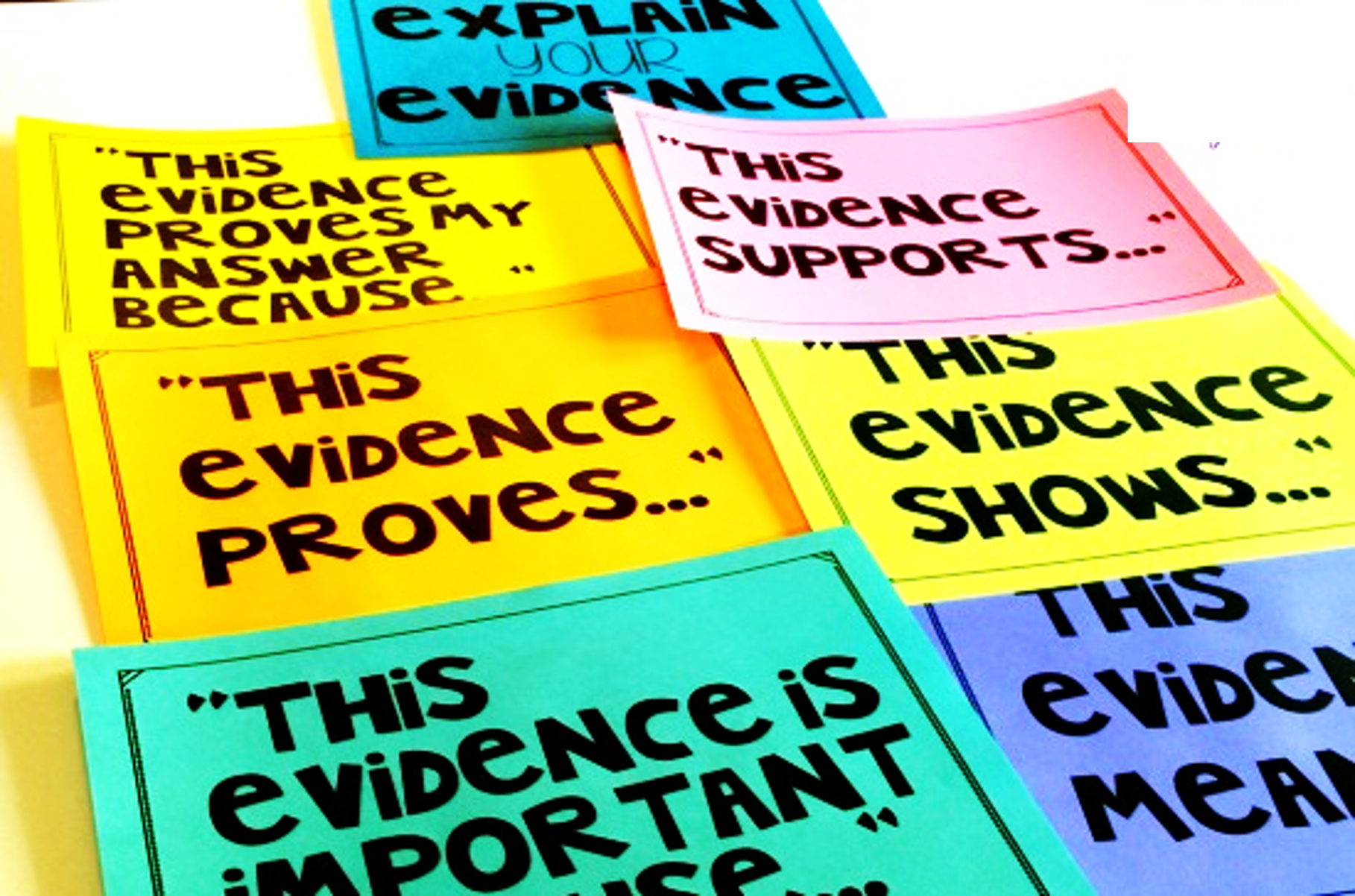
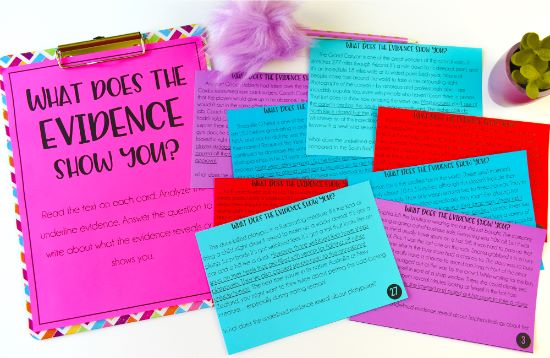
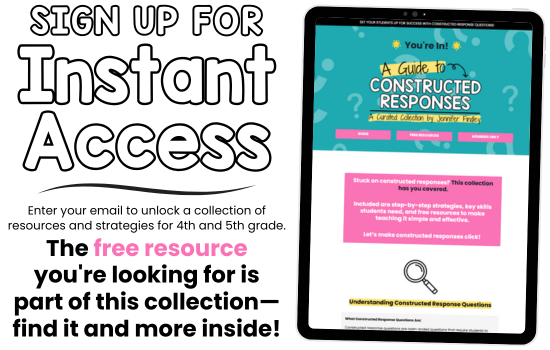







Thank you so much!!!
Hi Jennifer,
I love your activities and strategies to help students cite evidence from the text. I am excited to try some of them with my students because I haven’t found a method that is as effective as I would like it to be. I use RACE most often because it is easy for them to remember, but I felt like it isn’t enough. The ways you expanded on that method are great and I will definitely be using them.
One question I have that I’m hoping you have some advice or guidance on is about getting students to realize the importance of citing evidence. I frequently find myself in situations with students where they are either citing the wrong information because they don’t look back through the text or they don’t think they need to justify their thinking. I was wondering if this is something you face or have faced and if you have any suggestions for how to overcome it.
Using the methods you talk about here are definitely going to help with their motivation and engagement, but I am worried that I will still have similar problems. Any help would be greatly appreciated!
Thank you,
Jen
thank you veru much for he free material , for sure I will use it on my online classes. thanks you are really kind
I am so overjoyed with excitement to find such overwhelming amount of strategies and hands on activities I can use starting day one of school. Where have you been all summer! I’m glad I still have a few days left of freedom, but I am going to spend them printing and organizing these great ideas. Thank you